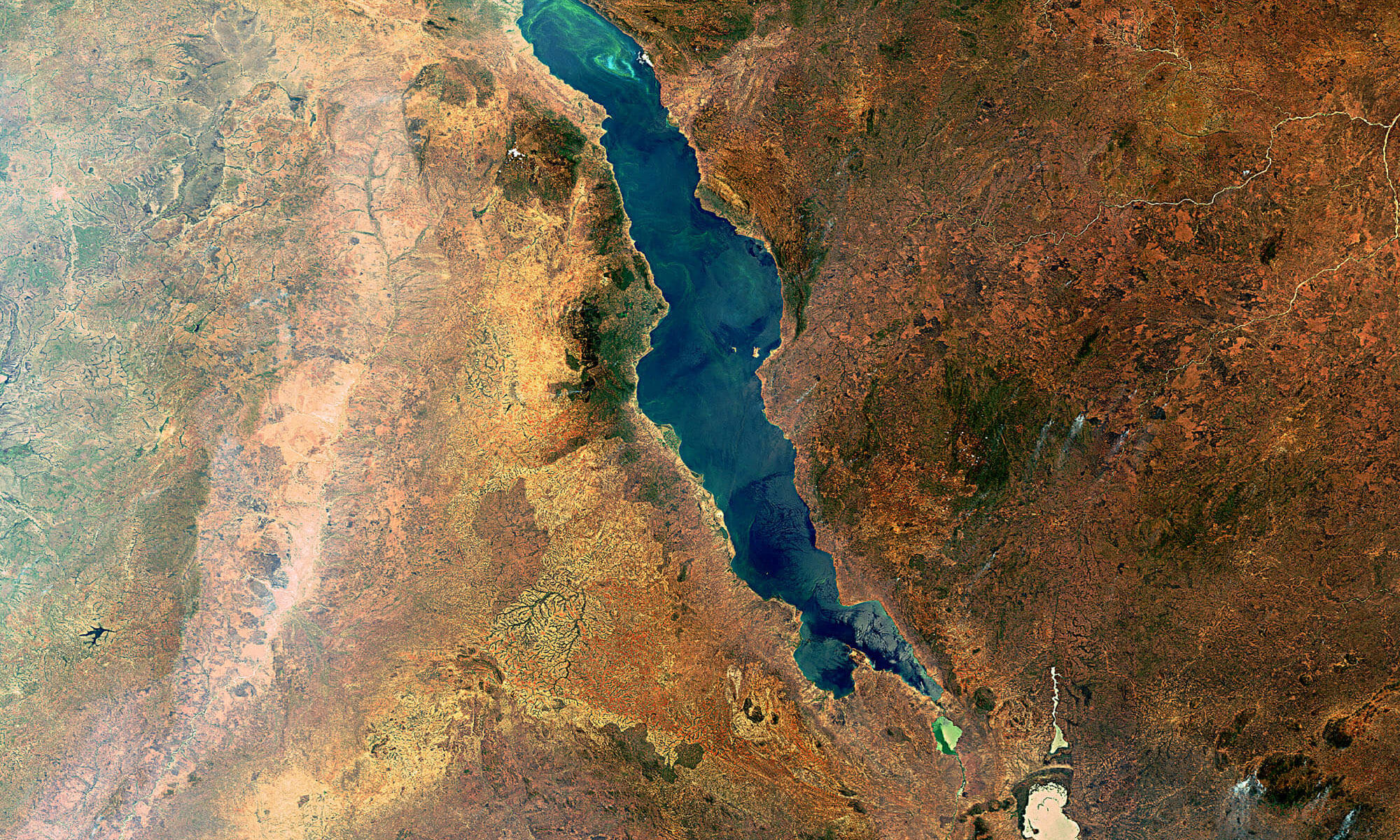Featured image: Lake Malawi, as seen from space. Image courtesy of ESA/MERIS, CC-BY-SA IGO.
Paper: Preferential localized thinning of lithospheric mantle in the melt-poor Malawi Rift
Authors: E. Hopper, J. B. Gaherty, D. J. Shillington, N. J. Accardo, A. A. Nyblade, B. K. Holtzman, C. Havlin, C. A. Scholz, P. R. N. Chindandali, R. W. Ferdinand, G. D. Mulibo, G. Mbogoni
Continental rifting, where one landmass slowly breaks apart into two pieces separated by a brand new ocean basin, is a fundamental part of plate tectonics. But it presents an apparent paradox: the tectonic forces pulling on the plates are thought to be much too weak to break the strong rocks of the continents.
One way around this conundrum is to imagine that something happens to weaken continents in places and enable them to rift more easily. For example, adding a small amount of melt or magma can significantly reduce the strength of a tectonic plate. There’s evidence for melt playing an important role in rifting in places like Africa, where active continental rifting in the Eastern branch of the East African Rift System is associated with plentiful volcanic eruptions. But melt can’t resolve the rifting paradox in all cases – in fact, in the Western branch of the very same East African Rift System, we see little or no evidence for melt.
Emily Hopper and co-authors investigated the process of continental rifting sans melt in a study focused on the Malawi Rift, part of the melt-poor Western branch of the East African Rift System. They propose that rifts can form around preexisting weaknesses within continents even without a continuous supply of melt – though a little bit of melting at the beginning might help kickstart the rifting process.
Hopper and colleagues used seismic data, recordings of the vibrations from earthquakes, to map out the bottom of the continental tectonic plate in part of Malawi and measure how plate thickness changes across the rift. They found that continental thinning in the Malawi Rift is localized to a very narrow band that roughly tracks with the Ubendian Belt, a band of metamorphosed and highly deformed rocks. Their measurements also suggested that thinning of the continent within the rift happened partly by eroding away the bottom of the plate, as well as by stretching.
Putting these two results together – localized rifting along the Ubendian Belt, and some erosion at the base of the plate – Hopper and co-authors put together a story for how rifting can happen in Malawi despite the paucity of melt. The story starts about 25 million years ago with a little bit of heat, perhaps from a rising plume in Earth’s mantle, warming up small amounts of easily meltable minerals within the Ubendian Belt. These small amounts of melt are enough to initiate rifting and erode away the bottom of the plate. The heating isn’t sustained, so the whole system cools back down and we don’t currently see any evidence of melt, but rifting is able to continue in the now-much-weaker band of the Ubendian Belt.
Whichever way you look at it, melt seems to be key to breaking up continents. But in places with preexisting structures like the Ubendian Belt, a continuous supply of melt may not be needed to build and sustain a continental rift.
How do you break up a continent? by Hannah Mark is licensed under a Creative Commons Attribution-ShareAlike 4.0 International License.

